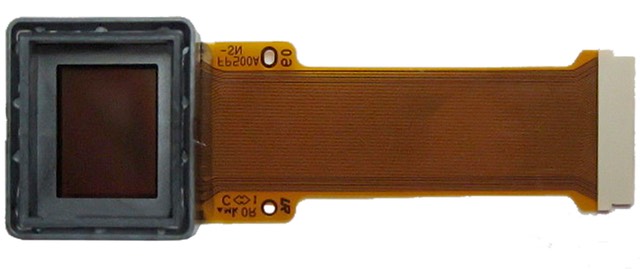Just as with image sensor megapixel counts, people don't fully understand the difference between dot counts in electronic viewfinders. The dot count exaggerates the resolution impacts of higher numbers, because the dots are spread over an area, not a single axis.

Here's where we stand with EVFs and what each means:
- 921k dot — 640 x 470 pixels, or VGA.
Cameras that use this include the Nikon V1, V2. - 1.44m dot — 800 x 600 pixels, or SVGA.
Cameras that use this include the Fujifilm X-Pro1 (hybrid); Olympus E-M5, E-M10; Panasonic G3, G5, G6, GH2; Sony A6000, A6100. - 2.36m dot — 1024 x 768 pixels, or XGA. 28% resolution gain over 1.44m.
Cameras that use this include the Canon RP, R7, R8, R10, R50, R100, M5, M50; Fujifilm X-Pro2 (Hybrid), X-E1, X-E2, X-E3, X-S10, X-S20, X-T1, X-T2, X-T10, X-T20, X-T30, X-T100, X-T200, GFX 50S; Hasselblad X1D; Leica CL; Nikon Z50; Nikon Z50II; Nikon Zfc; Olympus E-M1 (all), E-M1X, E-M5 Mark II/III, E-M10 Mark II/III, Pen F; OMDS OM-5; Panasonic GH4, GX-8, G7, G80, G90; Sigma sd Quattro; Sony NEX-6, NEX-7, A6300, A6400, A6500, A6600, A6700, A7 (all), A7C, A7CR, A7R I/II, A7S I/II. - 3.69m dot — 1280 x 960 pixels, or SXGA. 25% resolution gain over 2.35m.
Cameras that use this include the Canon R, R6, R6 Mark II; Fujifilm X-Pro3 (Hybrid), XT-3, XT-4, X-T5, X-H1, GFX 50R, GFX 50S; GFX 100S, Hasselblad X1D 50II; Nikon Zf, Z5, Z6, Z6II, Z6III, Z7, Z7II, Z8, Z9; Panasonic GH5/GH5s/G6, G9, G9 II, S5; Sony A7 Mark IV, A7R Mark III, A9 I/II. - 5.76m dot — 1600 x 1200 pixels, or UXGA. 25% resolution gain over 3.69m.
Cameras that use this include the Canon R1; Canon R3; Canon R5; Fujifilm X-H2, Fujifilm X-H2s; Fujifilm GFX 100; Hasselblad X2D 100C; Leica SL2; Nikon Z6 III, OMDS OM-1, Panasonic S1, S1R, S1H; Sony A7R Mark IV. - 9.44m dot — 2048 x 1536 pixels, or QXGA. 28% resolution gain over 5.76m.
Cameras that use this include the Fujifilm GFX 100 II; Sony A7S Mark III, A7R Mark V, A1, A1 II, A9 Mark III.
More variables apply, including refresh rates and types, magnification, and supplemental optics, and a few earlier mirrorless cameras have used non 4:3 EVFs. But a basic rule of thumb is that the cameras using the higher resolutions have better viewfinders than the ones using lower resolutions.
Another point: the 3:2 image sensor cameras using 4:3 EVFs tend to have at least one display mode where the image area at top is unobstructed, with camera settings in a bar below. The m4/3 cameras have to overlay the image area to present information in all display modes.
Finally, note that brightness can be more important than "more pixels." Brightness is measured in nits. The original Z50 EVF maxed out at 500 nits, while the newer Z50II goes to 1000 nits. Meanwhile, the Z6III viewfinder the first EVF that is HDR capable, meaning that not only can it go quite bright (2000 nits), but that it supports the REC.2020 type image space.
Personally, I find it difficult to discern detail differences beyond 3.69m dots (and I have 20/20 vision). I'd rather have more brightness range than more pixels.
